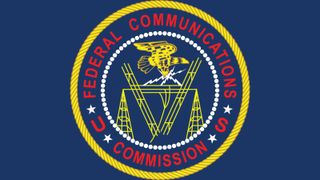FCC: CAF Subsidy Changes Help Close Rural High-Speed Divide

The FCC is promoting broadband subsidy reforms it said are boosting high-speed broadband buildouts in rural areas.
According to the FCC, reforms it adopted last December is bringing improved broadband service to over 106,000 rural homes and small businesses in 43 states.
“Today’s announcement means that many more rural Americans will have access to high-speed broadband service that will enable them to fully participate in the digital economy—entrepreneurship, telemedicine, precision agriculture, online education, and more,” said FCC chair Ajit Pai. “This is yet another example of how the FCC is working hard to close the digital divide.”
Specifically, the FCC said, 186 companies participating in the FCC's Alternative Connect America Fund (CAF) Cost Model program got $65.7 million in added support over the next 10 years, which they are using to deploy 25/3 Mbps--the FCC's target "high speed" broadband definition--to an increased percentage of those homes and businesses than before the December reforms provided added funds tied to those higher speeds. Before the vast majority of homes and businesses would only have to get 10/1 service.
NTCA-The Rural Broadband Association had argued that “a universal service program premised on achieving speeds of 10/1.
Mbps risks locking rural America into lower service levels." The FCC acknowledged that argument was a persuasive one.
CAF is the universal service fund program to migrate advanced telecom subsidies from traditional phone service to high-speed broadband in areas that are too expensive, which usually means remote, rural areas, to justify private-capital buildouts. Carriers bid on the money then roll out the service with some FCC stipulations about speed and timing.
Broadcasting & Cable Newsletter
The smarter way to stay on top of broadcasting and cable industry. Sign up below
The FCC is requiring fund recipients to deploy 25/3 to 40% of locations by 2022, and boost that by 10% annually through the end of the buildout.
The FCC released a state-by-state breakout of how many new high-speed connections would result from the change. That could come in handy for legislators who have been on the FCC's case about closing the rural digital divide, or for the Pai FCC trying to make the case that it is, indeed, closing that divide.
Contributing editor John Eggerton has been an editor and/or writer on media regulation, legislation and policy for over four decades, including covering the FCC, FTC, Congress, the major media trade associations, and the federal courts. In addition to Multichannel News and Broadcasting + Cable, his work has appeared in Radio World, TV Technology, TV Fax, This Week in Consumer Electronics, Variety and the Encyclopedia Britannica.

